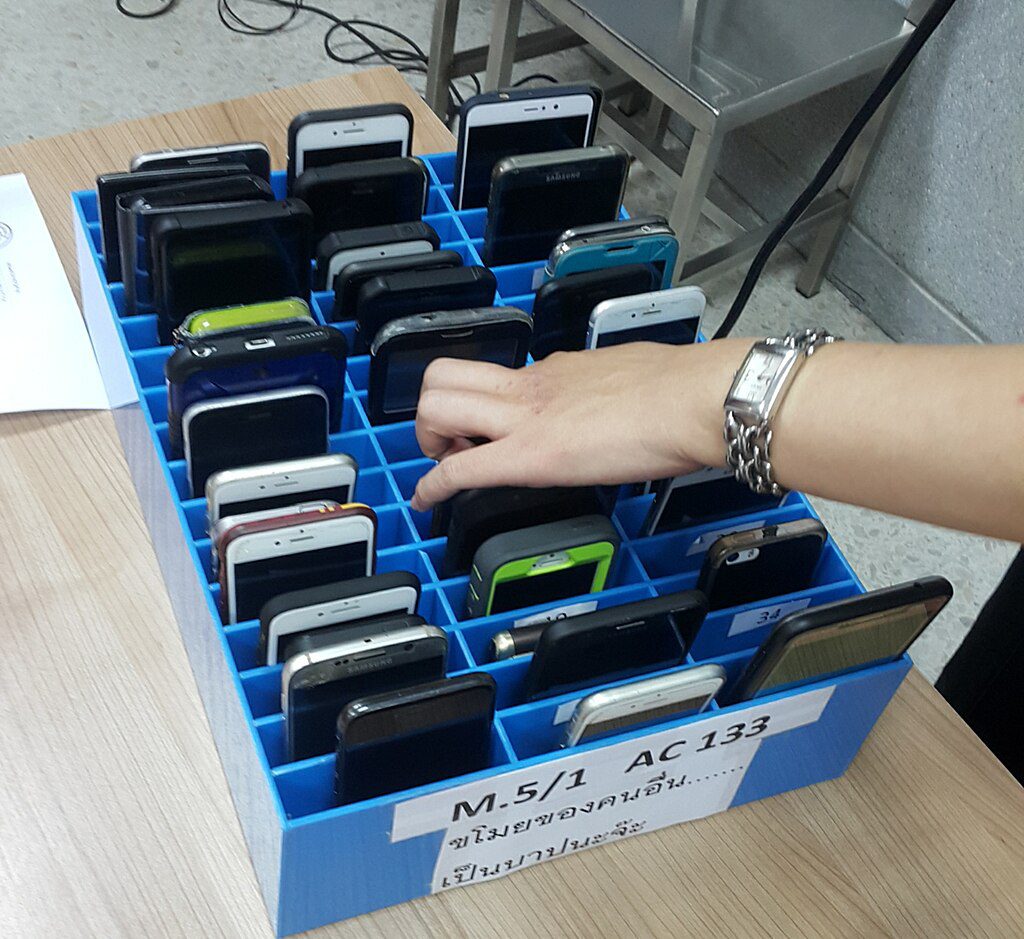 Gov. Gavin Newsom signed legislation this week requiring California school districts to limit student smartphone use during the school day by July 2026. The Phone-Free School Act – AB 3216 – makes California the fifth state to require all public schools to restrict student phone use on school grounds.
Gov. Gavin Newsom signed legislation this week requiring California school districts to limit student smartphone use during the school day by July 2026. The Phone-Free School Act – AB 3216 – makes California the fifth state to require all public schools to restrict student phone use on school grounds.
“We know that excessive smartphone use increases anxiety, depression and other mental health issues – but we have the power to intervene,” Newsom said in a statement. “This new law will help students focus on academics, social development and the world in front of them – not their screens – when they’re in school.”
The law says students must be allowed to use their phones in emergencies or when permitted by a teacher, administrator or doctor. Students can also use their phones if their individualized education program requires it.
But while AB 3216 won’t go into effect until July 2026, Marin County schools are ahead of the curve, according to the Marin IJ. “Access to cellphones during the school day can be disruptive to learning and social development,” said John Carroll, Marin superintendent of schools, who supported the legislation. The “legislation and its authorization for local education agencies to develop policy that best meets the unique needs of their community appears to be an effective way to address these well-known concerns.”
A majority of Marin school districts are requiring students to place their cellphones or smartwatches either in caddies hanging on classroom walls or in their backpacks or lockers during class, administrators say.
The backpacks and locker storage method is being used mostly at elementary school districts that have middle schools, such as the Ross Valley, Reed Union, Miller Creek and Mill Valley school districts, according to administrators.
Newsom has expressed concerns over student phone use in recent months. In June, he said he planned to build on existing legislation to crack down on school smartphone use and sent a letter to California schools last month urging educators to immediately restrict phone use as students returned to campus.
Newsom has cited a Pew Research survey that found that 72% of high-school and 33% of middle-school teachers report cell phone distractions as a major problem, and a Common Sense Media survey that found that 97% of students use their phones during the school day for a median of 43 minutes.
But Bay Area schools have been split on the issue, with some – like San Mateo High School, which became a phone-free campus in 2019 – in support of more restrictions. Others, like Livermore Valley Joint Unified School District and Palo Alto Unified School District, have said cellphones are necessary for many families and proposed bans don’t make sense in schools that rely on technology to support students’ learning.
Other key supporters include the Los Angeles Unified School District – which voted earlier this summer to ban students’ use of phones beginning in 2025 – the California Teachers Association and State Superintendent of Public Instruction, Tony Thurmond.
“AB 3216 represents an important opportunity to address the mental health of our students by restricting smartphones in schools,” Thurmond said. “I will continue to make sure that we hear the voices of our young people, their families and our hardworking school staff as we implement smartphone restrictions across the state.”

